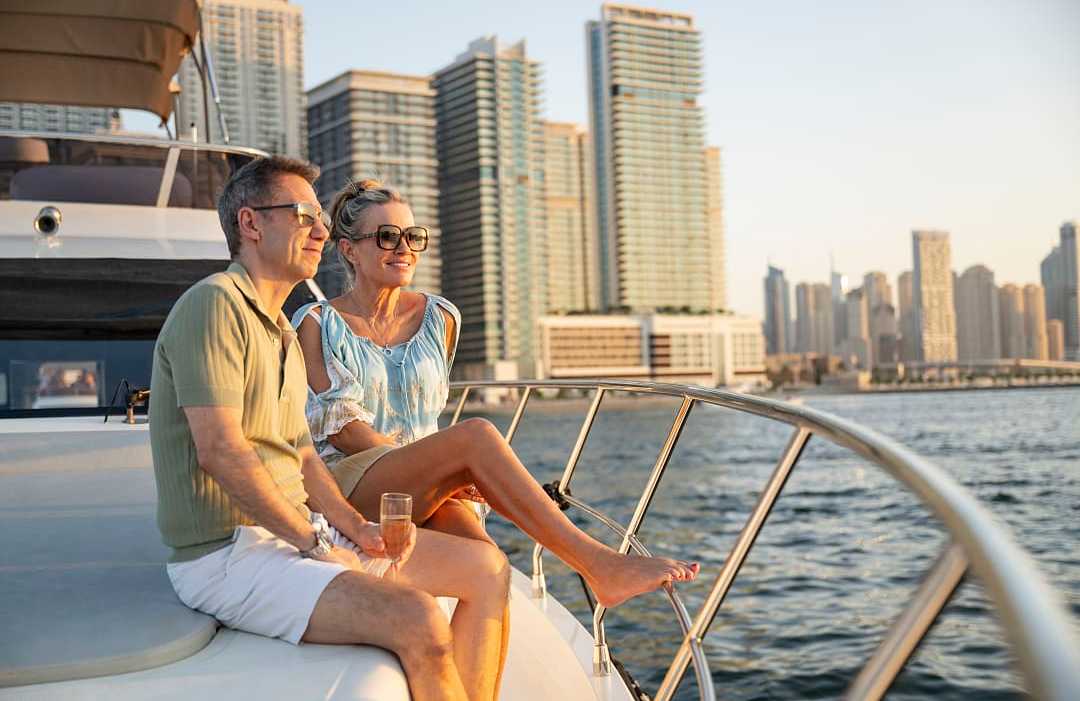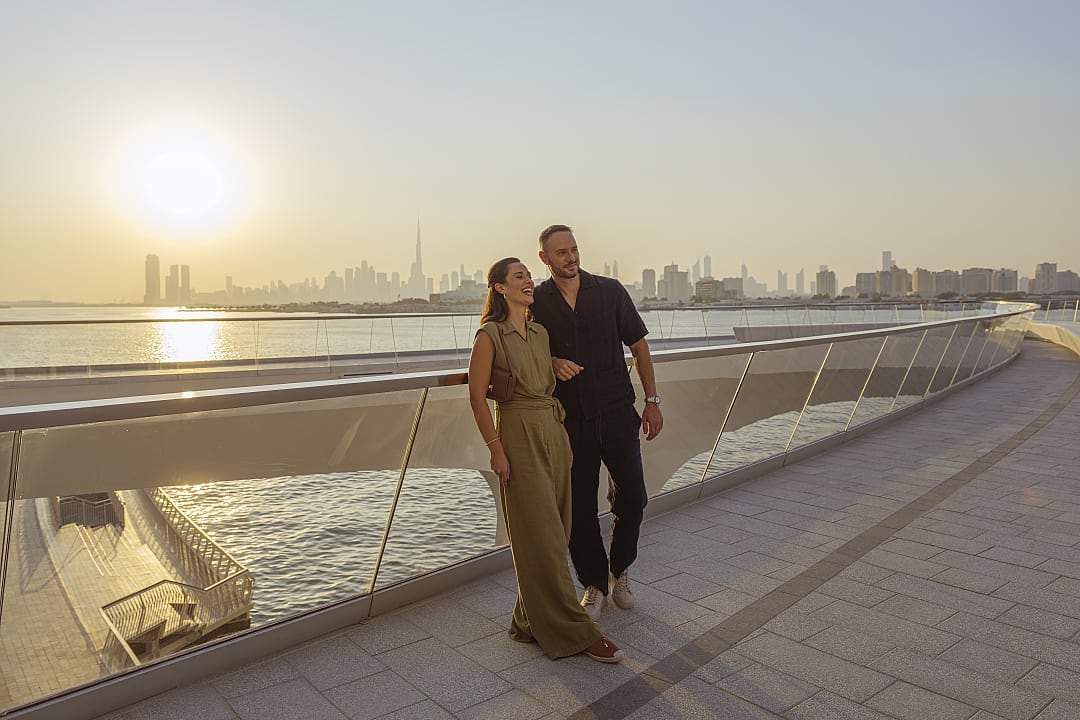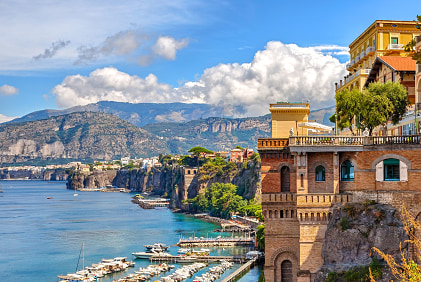Ras Al Khaimah is the UAE’s natural beauty, an emirate defined by the dramatic, rugged beauty of the Hajar Mountains, which crash down to meet nearly 40 miles of coastline. Known as the "adventure emirate," it has leveraged its unique topography to become a premier destination for thrill-seekers, nature lovers, and anyone looking to experience the great outdoors, from the UAE's highest mountain peak to its terracotta deserts.
In Ras Al Khaimah, feel the wind rushing past you as you soar through the air on the world's longest zipline, high above the jagged mountain canyons of Jebel Jais. Watch the sun rising over the vast, silent dunes of the Al Wadi Desert to reveal herds of Arabian oryx and gazelles or taste of the salty air on a traditional pearl-fishing boat, connecting with a heritage that predates the discovery of oil by centuries.
Beyond the adrenaline, you can explore the preserved "ghost town" of Al Jazirah Al Hamra, with its traditional coral-stone houses, or visit ancient forts that stand as silent guardians of the mountain passes. This mix of high-octane adventure and genuine heritage makes Ras Al Khaimah a compelling destination if you are seeking a more rugged and elemental Arabian experience.
Weather in Ras Al Khaimah
The winter months of November to March are ideal for visiting Ras Al Khaimah, with average temperatures of around 77°F. The region's mountainous terrain means temperatures can be noticeably cooler than in other emirates, especially at higher altitudes like Jebel Jais. Summers are very hot, often exceeding 109°F, but the coastal areas offer a welcome breeze.
What to Expect
A journey to Ras Al Khaimah will place you in the raw, natural beauty of Arabia, where adventure and tranquility are found in equal measure.
- Feel the incredible, heart-stopping rush of adrenaline on the Jais Flight, the world's longest zipline, as you travel at speeds of more than 90mph over the mountain landscape. Savor the peace of the desert at a luxury camp, where the silence is broken only by the whisper of the wind.
- See the breathtaking panoramic views from the top of Jebel Jais, the UAE's highest peak, where winding roads lead to dramatic viewpoints over the rugged Hajar range. Take in the stark beauty of the abandoned coral-stone houses of Al Jazirah Al Hamra, a preserved pearling village that offers a glimpse into the past.
- Hear the stories of pearl divers and ancient traditions from a private guide at a pearl farm and the quiet footsteps of a camel on a trek through the silent desert dunes.
- Taste a gourmet meal under the stars at a luxurious desert camp. Enjoy the subtle, salty flavor of a freshly harvested oyster at a pearl farm or a traditional Bedouin dish like lamb madfoon after a day of desert exploration.
Where to Go in Ras Al Khaimah
The emirate's key destinations are defined by its three dominant landscapes: the mountains, the desert, and the coast.
Jebel Jais • Best for Mountain Thrills
Ascend into the heart of the Hajar Mountains to Jebel Jais, the highest peak in the United Arab Emirates at 6,345 feet. A spectacular mountain road winds its way towards the summit, offering numerous viewing platforms along the way. This is Ras Al Khaimah's adventure hub, home to attractions that make use of the dramatic, rocky terrain. It is also a haven for hikers, climbers, and sightseers.
- Feel the temperature drop as you ascend the mountain, providing a refreshing escape from the coastal heat.
- See the vast, jagged expanse of the Hajar Mountain range stretching out before you, a landscape of raw, geological power.
- Experience the Jais Sledder, a toboggan ride that winds down the mountainside, offering thrilling speeds and stunning views.
The Al Wadi Desert • Best for Luxury and Nature
Immerse yourself in the beauty and tranquility of the Arabian desert within a 1,235-acre protected nature reserve. This is a place to connect with the desert ecosystem and Bedouin heritage as you enjoy wildlife encounters, traditional sports, and relaxation.
- Feel the sense of seclusion and peace in your private desert villa, surrounded by the vast, silent landscape.
- See herds of Arabian oryx and gazelles wandering past your terrace at dawn or dusk.
- Learn the ancient art of falconry from a master falconer or try your hand at archery in a traditional desert setting.
Al Jazirah Al Hamra and the Coast • Best for History and Relaxation
Explore Ras Al Khaimah's coastal heritage and enjoy its beautiful beaches. Al Jazirah Al Hamra is a preserved "ghost village," an abandoned pearling town where the original coral-stone and mud-brick houses still stand. Wandering its deserted alleyways is a powerful and atmospheric experience. Nearby, the coast is lined with luxury accommodations and pristine public beaches, perfect for relaxing after a day of adventure.
- Feel the weight of history as you walk through the silent, abandoned streets of Al Jazirah Al Hamra.
- See the traditional architecture, made from local materials like coral and palm trunks, that was ingeniously designed to cope with the harsh climate.
- Relax on the golden sands of Al Marjan Island, a man-made archipelago that offers luxury resorts and beautiful, calm waters.
What to Do in Ras Al Khaimah
The emirate’s signature activities are world-class adventures that cannot be experienced anywhere else in the region, combined with unique cultural encounters.
Fly on the Jais Flight, the World's Longest Zipline
Enjoy the thrill on Jais Flight. Suspended 5,511 feet above sea level on Jebel Jais, this record-breaking zipline spans nearly 1.9 miles, sending you soaring headfirst in a "superhero" position over the rugged mountain peaks and deep valleys at speeds of up to 93mph. It is a truly unforgettable experience and the most exhilarating way to admire the breathtaking mountain scenery.
- Feel a mix of pure terror and exhilaration as you step off the platform into the void.
- See the world from a bird's-eye perspective, with the dramatic, rocky terrain unfolding beneath you.
- Hear nothing but the sound of the wind rushing past you as you fly through the heart of the mountains.
Take a Nature Drive in a Private Desert Reserve
Take a guided nature drive within the protected Al Wadi Nature Reserve for an intimate encounter with the unique wildlife of the Arabian desert. Unlike a typical desert safari, this experience focuses on education and conservation, with your private guide sharing insights into the fragile desert ecosystem and the behaviors of its native inhabitants.
- Feel the anticipation as your guide points out animal tracks in the sand, signaling that wildlife is near.
- See majestic Arabian oryx with their long, straight horns, graceful sand gazelles, and perhaps even a desert fox darting across the dunes.
- Learn how these animals have adapted to survive in one of the world's harshest environments, a testament to the resilience of nature.
Discover the Ancient Heritage of Pearling
Journey into Ras Al Khaimah's past at the Suwaidi Pearls farm, the only traditional pearl farm in the UAE. This hands-on cultural experience begins with a ride on a traditional wooden dhow boat through the serene mangrove forests. At the floating farm, you will learn about the history of pearl diving, the techniques of modern oyster cultivation, and the central role this industry played in the region's economy for centuries.
- Feel the history come alive as you listen to stories of the hardships and triumphs of the traditional pearl divers.
- See the intricate process of how a pearl is formed within an oyster.
- Experience the excitement of opening your own oyster, with the chance to find and keep a genuine Arabian pearl as a unique and meaningful souvenir.











